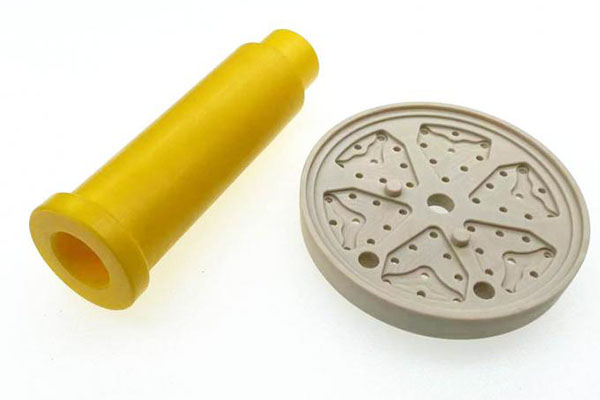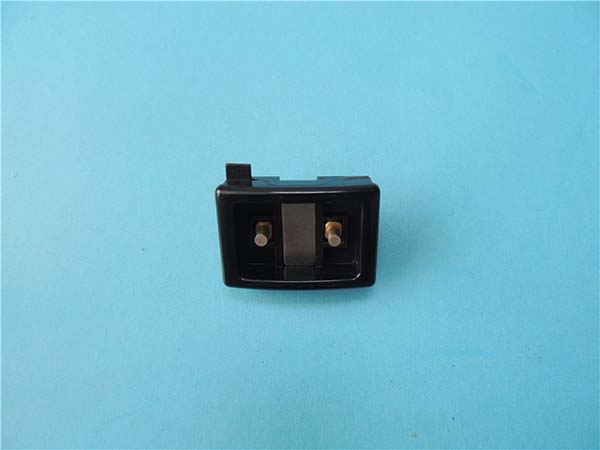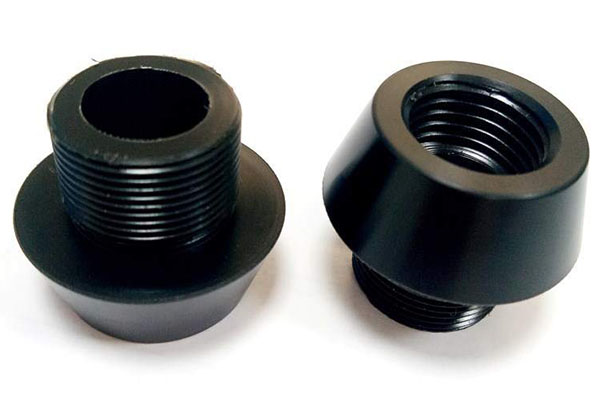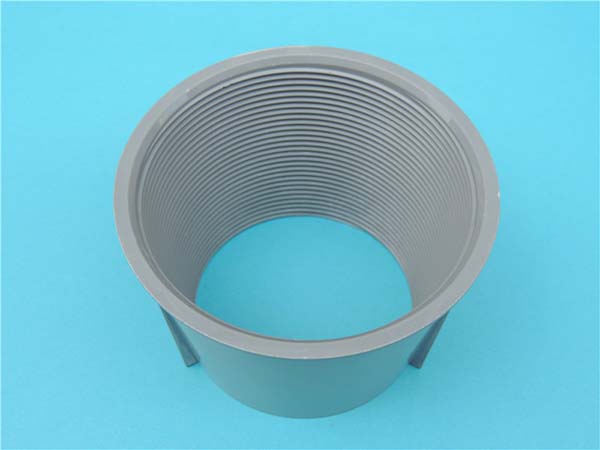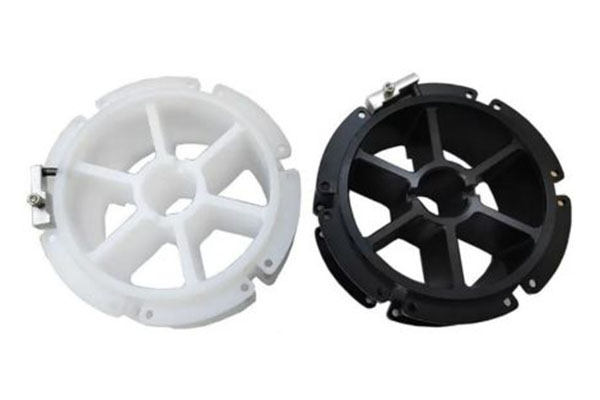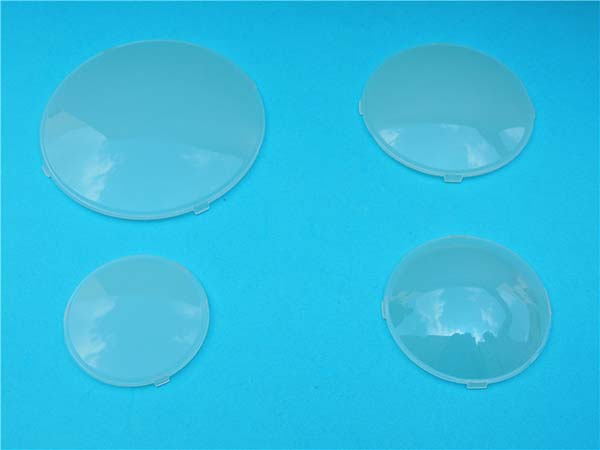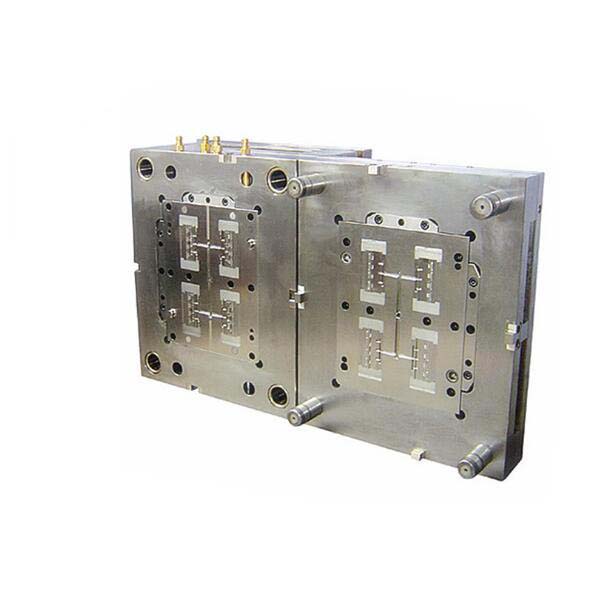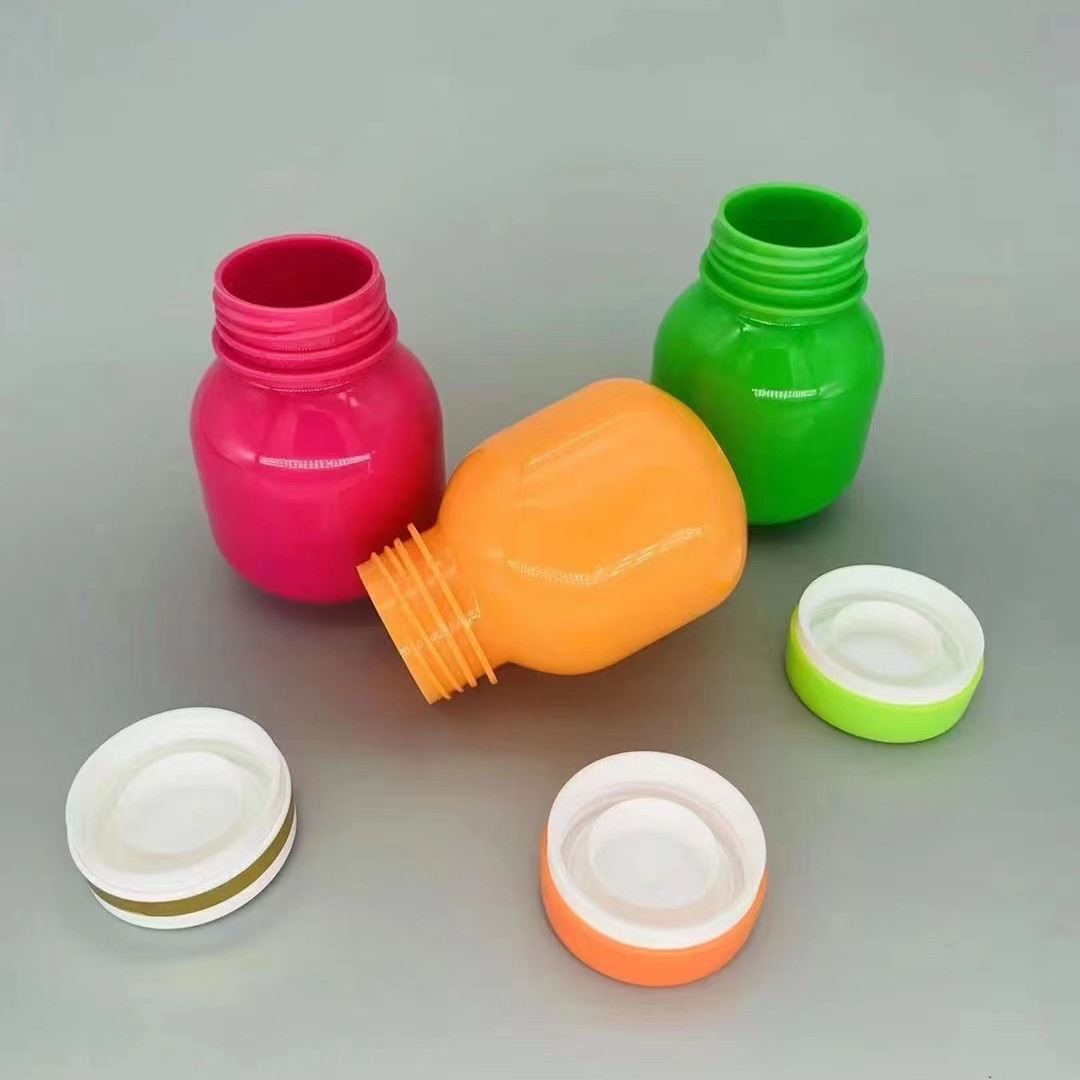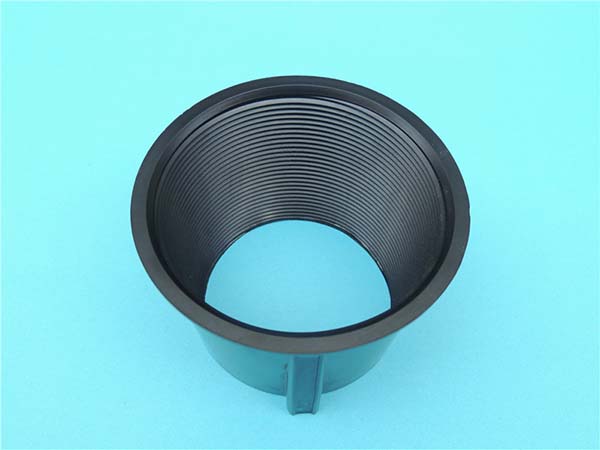What are Plastic Parts?
Plastic parts are components made from synthetic or semi - synthetic materials known as plastics. These materials are composed of polymers, which are large molecules made up of repeating subunits called monomers. The ability to mold and shape plastics into various forms makes them incredibly versatile for creating an extensive range of parts.
Plastics can be classified into two main categories: thermoplastics and thermosetting plastics. Thermoplastics, such as polyethylene (PE), polypropylene (PP), and polyvinyl chloride (PVC), can be melted and reshaped multiple times. This property allows for easy recycling and re - processing. For example, PE is widely used in the production of plastic bags, bottles, and toys due to its low cost, high chemical resistance, and flexibility.
On the other hand, thermosetting plastics, like epoxy and phenolic resins, once cured, cannot be remelted or reshaped. They offer excellent heat resistance, durability, and dimensional stability. Epoxy resins are commonly used in the aerospace industry for manufacturing composite parts due to their high strength - to - weight ratio and good adhesion properties.
Plastic parts find applications in almost every industry. In the automotive industry, they are used in interior components like dashboards, seat covers, and door panels, as well as exterior parts such as bumpers and body panels. The use of plastic parts in cars helps to reduce weight, improve fuel efficiency, and lower production costs. For instance, modern car bumpers made of plastic are not only lighter but also more impact - resistant than their metal counterparts.
In the electronics industry, plastic parts are crucial for enclosing electronic devices, such as mobile phones, laptops, and televisions. They provide insulation, protection against dust and moisture, and contribute to the sleek design of these products. The small plastic connectors inside electronic devices are also essential for ensuring proper electrical connections.
The medical field also heavily relies on plastic parts. Syringes, IV tubing, and medical implants are often made of biocompatible plastics. These plastics are designed to be non - toxic and non - reactive with the human body, ensuring the safety and effectiveness of medical procedures. For example, the plastic used in syringes must be of high quality to prevent any contamination of the medication being administered.
The Key Aspects of Plastic Parts
Material Types
There is a wide variety of plastic materials available, each with its own unique set of characteristics. Here are some of the most common ones:
- Polyethylene (PE): It comes in different grades such as high - density polyethylene (HDPE) and low - density polyethylene (LDPE). LDPE is known for its flexibility, transparency, and good chemical resistance. It is often used in the production of plastic bags, cling films, and some types of bottles. HDPE, on the other hand, is more rigid, has higher strength, and is used for applications like pipes, large containers, and toys. For example, HDPE pipes are widely used in water supply systems due to their durability and resistance to corrosion.
- Polypropylene (PP): PP has a relatively high melting point, good heat resistance, and is more rigid than PE. It is also resistant to many chemicals. PP is commonly used in automotive parts, such as interior trim and bumpers, as well as in household appliances like food containers and plastic cutlery. Its high - temperature resistance makes it suitable for items that may be exposed to heat, like the components in a coffee maker.
- Polyvinyl Chloride (PVC): PVC can be either rigid or flexible depending on the additives used. Rigid PVC is used in construction for pipes, window frames, and siding due to its durability, low cost, and good weather resistance. Flexible PVC, often with the addition of plasticizers, is used in products like cables, hoses, and some types of clothing. However, PVC can release harmful chemicals during production and disposal, which has raised environmental concerns.
- Polystyrene (PS): PS is a brittle, transparent plastic. General - purpose PS is used for disposable products such as cups, plates, and packaging materials. Expanded polystyrene (EPS), which is made by blowing air or gas into PS, is a lightweight, insulating material used in packaging (like foam packaging for electronics) and in the construction industry for insulation boards.
Manufacturing Processes
- Injection Molding: This is one of the most common manufacturing processes for plastic parts. In injection molding, plastic pellets are melted in a heated barrel and then injected under high pressure into a closed mold cavity. After the plastic cools and solidifies, the mold opens, and the finished part is ejected. The process is highly efficient and can produce complex - shaped parts with high precision. For example, most of the small plastic components in electronic devices, like the buttons on a remote control, are made through injection molding. However, it requires high - cost molds, making it less suitable for small - batch production.
- Extrusion Molding: In extrusion, plastic material is melted and forced through a die with a specific cross - sectional shape. The continuous output of the extruded plastic can be cut into desired lengths. This process is used to produce products with a constant cross - section, such as pipes, rods, sheets, and profiles. For instance, plastic window frames are often made by extrusion molding. It is a cost - effective method for large - scale production of simple - shaped plastic products.
- Blow Molding: There are two main types: extrusion blow molding and injection blow molding. In extrusion blow molding, a parison (a tube - like piece of molten plastic) is extruded first. Then, it is placed in a mold, and air is blown into it to expand the plastic against the mold walls, forming a hollow product like a plastic bottle. Injection blow molding involves first creating a pre - form through injection molding, and then blowing it into the final shape. Blow molding is mainly used for manufacturing hollow plastic products.
Design Considerations
- Wall Thickness Uniformity: Maintaining a consistent wall thickness is crucial in plastic part design. Uneven wall thickness can lead to issues such as warping, shrinkage, and internal stress during the cooling process. For example, if a plastic container has a thick section in one area and a thin section in another, the thicker part will cool more slowly, causing the part to warp as the differential cooling rates create internal stress.
- Draft Angle (Demolding slope): A draft angle, also known as a Demolding slope,is an important design factor. It is the angle given to the sides of a plastic part to allow it to be easily removed from the mold. If the draft angle is too small or non - existent, the part may get stuck in the mold during ejection, leading to damage or deformation of the part. The appropriate draft angle depends on factors like the material used and the complexity of the part. For example, for a simple, smooth - walled plastic part made of polyethylene, a draft angle of 0.5 - 1 degree may be sufficient, while a more complex part with undercuts may require a larger draft angle.
- Reinforcement Rib Design: Reinforcement ribs, or 加强筋,are used to increase the strength and stiffness of a plastic part without increasing the wall thickness significantly. They are especially important for large or thin - walled parts. For instance, in the design of a plastic storage bin, reinforcement ribs can be added on the sides and bottom to prevent the bin from bending or deforming under load. However, the design of the ribs needs to be carefully considered. If the ribs are too thick, they can cause sink marks on the outer surface of the part due to uneven cooling.
Performance and Properties
Mechanical Properties
Plastic parts exhibit various mechanical properties. Strength is the ability of a plastic to withstand an applied force without breaking. For example, polycarbonate (PC) has high tensile strength, making it suitable for applications where impact resistance is required, such as in safety goggles and motorcycle helmets. Hardness refers to the resistance of a plastic to indentation or scratching. Acetal (POM) has high hardness, which makes it useful for parts like gears and bearings that need to withstand wear. Toughness is the ability of a plastic to absorb energy before fracturing. Nylon (PA) is known for its high toughness, allowing it to be used in applications like automotive airbag components. Different plastic materials have different mechanical property profiles. For example, compared to polyethylene, polypropylene has higher stiffness and tensile strength, but lower impact strength at low temperatures.
Chemical Resistance
The chemical resistance of plastic parts is an important consideration. For instance, polyethylene and polypropylene are resistant to many acids and alkalis, making them suitable for use in chemical storage tanks and pipes for transporting corrosive liquids. However, some plastics are not suitable for certain chemical environments. Polystyrene, for example, is easily dissolved by many organic solvents, so it should not be used to store substances like gasoline or paint thinners. Fluoropolymers, such as polytetrafluoroethylene (PTFE), have excellent chemical resistance and are often used in applications where exposure to highly corrosive chemicals is expected, like in chemical processing equipment.
Thermal Properties
Plastic parts have different thermal properties. The coefficient of thermal expansion (热膨胀系数) determines how much a plastic will expand or contract with changes in temperature. For example, plastics like polyethylene have a relatively high coefficient of thermal expansion. This means that in applications where dimensional stability is crucial, such as in precision - engineered electronic components, materials with lower coefficients of thermal expansion may be preferred. Heat - resistant temperature is another important thermal property. Thermoplastics like polyetheretherketone (PEEK) can withstand high temperatures, making them suitable for use in aerospace and automotive applications where parts may be exposed to extreme heat, such as engine components. On the other hand, some common plastics like polyethylene and polypropylene have lower heat - resistant temperatures and are not suitable for high - temperature applications without proper modification.
Yigu Technology's View
Yigu Technology, as a non - standard plastic metal products custom supplier, specializes in plastic parts production. We have a team of highly skilled engineers and technicians who are well - versed in the latest plastic processing technologies. Our state - of - the - art manufacturing facilities are equipped with advanced injection molding, extrusion, and blow - molding machines, enabling us to handle projects of various sizes and complexities.
We understand that each customer has unique requirements. That's why we offer customized solutions, from initial design consultation to final product delivery. Whether it's developing a new plastic part from scratch or improving an existing one, our team will work closely with you to ensure that the end product meets your exact specifications. We also have a strict quality control system in place, conducting multiple inspections at every stage of production to guarantee the highest quality of our plastic parts. With Yigu Technology, you can expect reliable, high - quality plastic parts that are tailored to your needs.
FAQ
What are the most common types of plastic used for plastic parts?
The most common types of plastic used for plastic parts include Polyethylene (PE), which comes in high - density (HDPE) and low - density (LDPE) forms and is used in products like plastic bags, bottles, and pipes. Polypropylene (PP) is another common one, known for its heat resistance and rigidity, often used in automotive parts and household appliances. ABS (Acrylonitrile Butadiene Styrene) is popular for its strength, impact resistance, and ability to be easily molded, used in electronics enclosures and toys. Polyvinyl Chloride (PVC) can be rigid or flexible and is used in construction (pipes, window frames) and some consumer products, though environmental concerns exist due to potential chemical releases.
How can I ensure the quality of plastic parts during production?
To ensure the quality of plastic parts during production, start with the selection of high - quality raw materials. Check for material certifications and proper storage conditions to prevent degradation. Control the production process closely, maintaining accurate temperature, pressure, and cycle time settings in processes like injection molding. Conduct regular equipment maintenance to avoid malfunctions that could affect part quality. Implement quality inspection at various stages, such as in - process inspection to catch defects early and final inspection to ensure the parts meet all specifications. Use techniques like dimensional inspection, visual inspection for surface defects, and mechanical testing for properties like strength and hardness.
Are there any environmental concerns associated with plastic parts?
Yes, there are significant environmental concerns related to plastic parts. Most traditional plastics are non - biodegradable, which means they can persist in the environment for hundreds of years. When plastic parts are discarded, they can end up in landfills, where they take up space and do not break down. They can also find their way into water bodies, causing pollution and harm to aquatic life. For example, marine animals may ingest plastic debris, mistaking it for food, leading to injury or death. However, the development of biodegradable plastics offers a solution. These plastics can break down naturally through the action of microorganisms in the environment, reducing the long - term environmental impact. Using biodegradable plastic parts can help mitigate plastic pollution and contribute to a more sustainable future.
